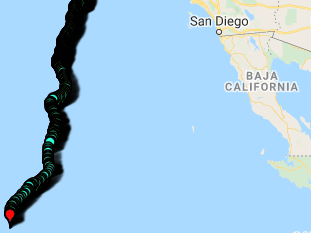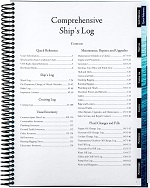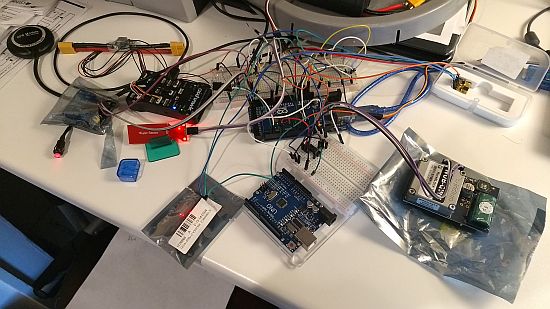Hull Design, Motor Pod, and Power thoughts
Since my last update I’ve begun “work” on the physical aspect of LoCarb, thinking about the hull materials, design, and parts procurement to actually put LoCarb together. I didn’t realize how much thought goes into the physical design because before you actually build anything, you actually have to know how everything fits together. I have never really done anything quite like this, and its taken me several weeks to get a grasp on what makes the most sense for a smaller autonomous boat like LoCARB. In order to help organize my thoughts as to how to proceed, I went through a mental flow which went something like this:
LoCARB Hull Requirements
- Must float and keep the solar panels exposed to light
- Must be able to self-right (keep upright even after capsizing)
- Must not break apart
Those requirements then lead to the HOW part of the design, which caused much mental anguish. Many times my wife would see me staring off into the distance and ask if I was thinking about the boat…What kinds of hull is the most appropriate for LoCARB, what dimensions does the hull need to be, how does weight factor in the entire equation? What is the best way to steer the boat? What is the best way to integrate the propeller? Does it need to be watertight? Does LoCARB need to be rigid or flexible? Fiberglass, wood, or metal construction? You get my point…the possibilities and options are endless. As a twist of fate, the low-cost-easy-to-build premise of LoCARB helped reduce the number of options I could choose from and streamlined the design principles and materials selection.
LoCARB design
Requirement #1
To fulfill requirement #1 of being able to float, LoCARB will be built with XPS Foam insulation sheets cut and shaped to the hull shape shown below. XPS foam was chosen because apparently its easy to work with (haven’t bought them yet), is waterproof, and readily available.
I used the free version of Delftship to design the hull by using a hull template and modifying it until it met my specifications. Adjustments were made to fit the dimensions that I desired for LoCARB such as height, length, and width. At the moment Ill have a hull that’s ~9.5″ tall ~5.5″ wide and ~6-6.5′ long (subject to change once I test it on water) with a maximum hull speed capability of 3.31 knots.
The hull will then be covered in a few layers of fiberglass/resin for durability. The hull doesn’t need to be watertight as the foam will still displace water and keep LoCARB from sinking. It also doesn’t need to be that rigid as boats can be flexible and still durable, as long as it keeps things from sinking i’m golden.
I haven’t included this in any drawings but there will be a recessed cavity running the upper length of the hull to accommodate a 2 x 4 piece of wood. This wood will be the backbone of the hull to attach bolts (which will be used to attach the solar panel platform) and act as sturdy receiver for the two pvc pipe struts (attached to the motor/battery pod) which will enter from the bottom of the hull. Two holes will be drilled to accommodate the pvc pipe and allow the pipe to be run lengthwise resting on the upper part of the 2 x 4 to act as a wire conduit to and from the required compartments.
Requirement #2
Keeping LoCARB upright is essential to solar power generation and to allow the satellite modem to properly send and receive data. In order for LoCARB to be self-righting, I could have used a weighted keel (and located all batteries and motor/electronics within the hull), but realized it was inefficient as I would have to add additional weight to the keel to keep the boat from listing too much by waves/wind. One of the reasons why I chose a heavy sealed lead acid battery was because I wanted to use the weight (68lbs) to act as ballast for just this reason. One of the things I learned while designing a Co2 inflated emergency flotation device for my small 12′ aluminum boat a few years back was that water weighs quite a bit. Saltwater weighs about 64 pounds per cubic foot, and for anything to float, it needs to be lighter than that weight with area being the same. Put simply, to make something float just displace more water weight than whatever it is you want to float. Being that salt water weighs a lot, it makes it easier to float things.
Working out the motor pod displacement
The dimensions of the 12v SLA battery would require a 9.5″-ish diameter tube, so I just purchased a 10″ thinwall PVC duct cut to 20″ (for some silly reason a 9″ tube has a very small inside diameter vs going to the 10″ tube). I intend to seal the front end with a cut PVC sheet then attach a bowl to the front to make it more hydrodynamic (is that even a word?), it should look like a bullet. In the rear, there will be a 3d printed assembly of some sort (I need to design it still) to house the magnetic coupling and trimmings. I envision the finished pod should look like a torpedo – propeller cowl and all.
Estimating the buoyancy, I take the weight of my battery – 68lbs, and the weight of the ducting – about .35 lbs/inch @ 20″ (~7lbs) and add it all together to get 75 lbs. I figure all the wires, fasteners, motor, magnetic coupling, and charge controller will add 1-2lbs so we can settle at a weight of 76-77lbs.
In my rough calculations (since I haven’t finalized the build of the motor pod front and rear), the motor pod will displace roughly 1.2 cubic ft. which comes out to be 76.8 lbs of salt water displacement. Being that the motor pod will weigh 76-77lbs and the displacement is actually 76.8 lbs, the pod is effectively neutrally buoyant! I don’t know what effect this will have on the hull while on the ocean, but if this turns out to be an issue, Ill drill some holes into the front bowl and allow water to enter the cavity, which should give a teeny-tiny bit more downward pull while in the water.
Using a submerged battery/motor pod mounted offset from the main floating hull would effectively act as a self righting keel once out of the water as all 77-ish lbs would cause the motor pod to sink back into the water in the event the craft flips upside down.
Requirement #3
I admit trying to come up with a workable solution on how to join the main floating hull to the motor pod took me a while to come up with. I’m still sorting it out, but I think it should do. I decided to use thinwall PVC ducting for the main motor pod body and 3/4″ PVC pipe for the struts which will enter through the main hull for several reasons.
PVC is:
- Cheap and easy to work with.
- Easily attached to other materials. Attached with solvent will produce a chemical weld which will be strong, durable, and waterproof. If to be mechanically attached using epoxy or glue, the surface can be prepped using solvent and flame to oxidize the surface which can yield high adhesive strength.
- Hollow – I can run wires through it.
- Waterproof.
- Corrosion-free.
If I keep the struts somewhat short and fill the pipe cavity after I run wires through them with epoxy, I should have an extremely strong, waterproof connection to the main hull. the PVC struts being filled with epoxy would provide isolation from a leak or crack in the strut and from water entering the pipes from the hull (if it ever happens). It will also add strength to the PVC.
The devil is in the details…
With the main design for motor pod, hull, and pod connection to hull out of the way, the devil turned out to be in the details. How exactly will I run the wires, how will the rudder attach to the boat in a way where it will not rip off in the event of a collision, where will the electronic compartments be mounted, how will the struts connect to the pod?
I’m still working through those, but believe I have most of the issues sorted out. That’s for another post though…probably in a post with real build pics and progress because no one wants to read about the tiny details like that right?
Instead, lets talk about power supply progress…
Since my last power supply update, I’ve made a few slight changes to my power supply system. One being that the battery i will be using will be a 105 amp hour AGM battery. Two, that my solar panel I’ve ordered will be a 190W Ebay panel and three, the solar charge controller I’ve settled on is a Victron BlueSolar MPPT 75/15.
Battery Selection
I realized that most car batteries cant be shipped as they have vents which could leak the acid contained within. AGM batteries can be shipped because they are mostly sealed and don’t leak or really vent. Since my pod will be enclosed underwater, I opted to get an Autocraft Platinum 105 AH H-9 AGM battery without having to worry about the venting which would occur in the event of an overcharge situation. I also learned that AGM batteries can be discharged to 80% of its capacity and may charge quicker compared to regular SLA non AGM 12v batteries. I ordered mine from from Advance auto using a 25% off coupon and was able to get it for $185 shipped. Not bad at all.
Solar Panel Purchase
Doing some research into solar panel prices, I realized that name brand panels cost quite a bit. A Renogy 160W panel is $300. An eBay Elfeland 190W panel costs $200. I understand that with the cheaper Chinese branded panels, quality control is “iffy” and power output could drop after prolonged usage, but with a higher output rated panel I figure its worth a shot. Ill be giving it a few weeks worth of testing anyway to determine if there are major problems in its functionality. If it does deteriorate I can always file a Paypal claim and get my money back to go towards another panel.
Solar charge controller purchase
After ordering my panel, I decided to size my charge controller using the Victron charge controller selection tool which provided me the model based on the panel output wattage. It showed that a 75/15 BlueSolar MPPT charge controller would be a good fit for my application. I compared the features/cost/quality of the BlueSolar controller and found this to be very competitive to other brands. Whats really nifty about this controller is that it can be monitored and configured by a mobile bluetooth application (with Ve.Direct Bluetooth dongle) and the output can be interfaced with an Arduino if so desired (I wont be utilizing this data for LoCARB…maybe LoCARB v2?). I feel that at $88 on Ebay, it was a good buy.
Concerns moving forward
The only real concern I have moving forward is if the motor pod size will seriously affect the performance of LoCARB in the ocean. At 10″ diameter, its a large pod. Almost the size of a 5 gallon bucket! I’m not too concerned with speed, as long as it can overcome most drift and wind forces and keep a steady course. I guess only real world testing can tell if this 10″ tube will work. Worse case scenario is I make the pod out of fiberglass as a rectangle or I relocate the battery to the hull and run a tiny motor pod independent of the battery.
Either way, I think a lot of hands on work is my future 🙂













Try the H-8 agm batteries sold at Walmart. they were designed for European cars with heavy electrical demands with quick recharging. Its 95ah for only $150 too.